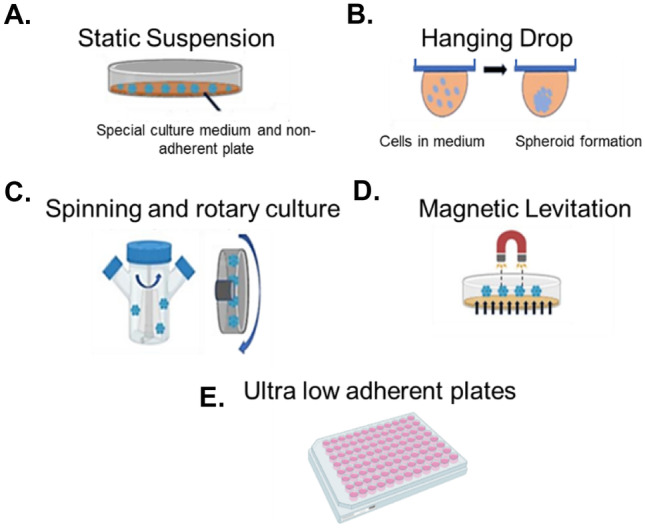Fig. 4.

The most common methods for spheroid formation, cultivation, and growth. A variety of different techniques for 3D spheroid production exist, each varying in complexity and ease of use. Common techniques include (A) static suspensions, or the liquid overlay technique, with spheroids formed from interruption of cell adhesion on non-adherent surfaces, (B) hanging drops, undertaken using commercial systems like InSphero™ Gravity Plus™, or using upturned petri dishes, whereby cells are seeded in small drops in medium and spheroids form due to gravitational forces, (C) rotary and spinning cultures, formed in vessels specifically designed to prevent cell adhesion, (D) magnet-assisted cultures or magnetic levitation, where cells are magnetised in culture, often by using nanoparticles, and pulled towards a magnet on top of the culture vessel, and (E) ultra-low attachment (ULA) surfaces and plates. Each technique is based on the principle to force cells to self-aggregate and compact into spheroidal 3D microtissues
